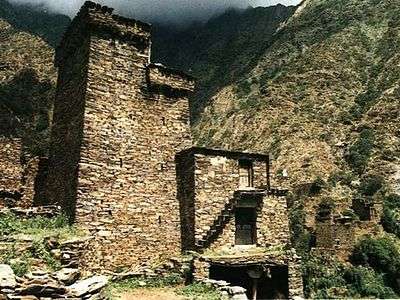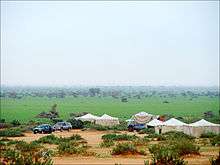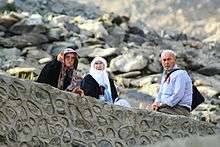Tourism in Saudi Arabia



Although most tourism in Saudi Arabia still largely involves religious pilgrimages, there is growth in the leisure tourism sector. According to the World Bank, approximately 14.3 million people visited Saudi Arabia in 2012, making it the world’s 19th-most-visited country.[1] Potential tourist areas include the Hijaz and Sarawat Mountains, Red Sea diving and a number of ancient ruins.
In December 2013, Saudi Arabia announced its intention to begin issuing tourist visas for the first time in its history. Council of Ministers entrusted the Saudi Commission for Tourism and Antiquities with visa issuing on the basis of certain regulations approved by the Ministries of Interior and Foreign Affairs.[2]
Museums
- National Museum of Saudi Arabia
- The National Heritage and History Museum in Riyadh
- Museum of Buraidah
- Dammam Historical Museum (Arabic: متحف الدمام الإقليمي )
- Dammam Public Library
- Dhahran Exhibition Centre (Arabic: مركز معارض الظهران)
- Folk Village
- Jeddah Regional Museum of Archaeology and Ethnography in in Jeddah
- Nasseef House in Jeddah
- Hejaz Railway Museum in Medina
- Royal Saudi Air Force Museum in Riyadh
- Dammam National Museum is located on the 4th floor of the Dammam Public Library, opposite the Muhammad bin Fahd Stadium on the cross lane from the Dammam-Khobar Highway in Al Toubaishi district. A must for visitors to the region, the museum focuses on the country's history, culture, and inhabitants through displays of relics and remnants of handicrafts.
- Al Ahsa Museum
World Heritage Sites
Diriyah is a town in Saudi Arabia located on the northwestern outskirts of Riyadh. Diriyah was the original home of the Saudi royal family and served as the capital of the first Saudi dynasty from 1744 to 1818. Today, the town is the seat of the Diriyah Governorate, which also includes the villages of Uyayna, Jubayla, and Al-Ammariyyah, among others, and is part of Ar Riyad Province.
Mada'in Saleh is a pre-Islamic archaeological site located in the Al-Ula sector, within the Al Madinah Region of Saudi Arabia.[3] A majority of the vestiges date from the Nabatean kingdom (1st century AD).[4] The site constitutes the kingdom's southernmost and largest settlement after Petra, its capital.[5][6] Traces of Lihyanite and Roman occupation before and after the Nabatean rule, respectively, can also be found in situ,[6] while accounts from the Qur’an tell of an earlier settlement of the area by the tribe of Thamud in the 3rd millennium BC.[7]
 Saad ibn Saud Palace
Saad ibn Saud Palace
Religious tourism

Tourism in Saudi Arabia still largely involves religious pilgrimages. Mecca receives over three million pilgrims a year during the month of Dhu al-Hijjah in Hajj,[8] and around two million during the month of Ramadan in Umrah.[9] During the rest of the year, Mecca receives around four million for Umrah. The Hajj, or pilgrimage to the city, is one of the five pillars of Islam. However, non-Muslims are not allowed to enter.
Restrictions and security
All visitors to Saudi Arabia require a sponsor, which is usually arranged months in advance. Visas are only issued for business, relatives of Saudis, transit to a third country, and Muslim pilgrims; general tourism is not allowed (Citizens of GCC countries, i.e., Kuwait, United Arab Emirates, Bahrain, Oman, and Qatar don't require visas to enter the country. They are also permitted to work and live in Saudi Arabia and vice versa. They can also enter using their national ID cards). Women may not travel alone, and women and children require permission of the male head of household to enter and leave the country.[10] Though crime is lower than many cities around the world, the U.S. State Department warns travelers of an elevated risk of attacks on Westerners,[11] and attacks on maritime vessels in certain areas.[10]
Hajj pilgrims from other countries, including foreign citizens already living in Saudi Arabia, must obtain a permit and make arrangements for transport and accommodation with a government-approved travel agent. Hajj and Umrah permits only allow foreign visitors access to areas near and between Mecca, Medina, and Jeddah, and only for a limited time. Passports are confiscated upon arrival, and visitors are issued ID cards and wristbands.[12]
See also
References
- ↑ Tourism in Saudi Arabia: Wish you were here, economist.com.
- ↑ "Tourist visas to be introduced". Retrieved 11 June 2015.
- ↑ Abu-Nasr, Donna (2009-08-30). "Digging up the Saudi past: Some would rather not". Associated Press. Retrieved 2009-09-17.
- ↑ The New Encyclopædia Britannica: Macropædia Volume 13. USA: Encyclopædia Britannica, Inc. 1995. p. 818. ISBN 0-85229-605-3.
- ↑ "Expansion of the Nabataeans". Retrieved 2009-09-17.
- 1 2 "ICOMOS Evaluation of Al-Hijr Archaeological Site (Madâin Sâlih) World Heritage Nomination" (PDF). World Heritage Center. Retrieved 2009-09-16.
- ↑ "Creation of Al-Hijr". Retrieved 2009-09-17.
- ↑ "Hajj Requirements: Visas for 1430 Hajj". Royal Embassy of Saudi Arabia. Retrieved 2009-07-30.
- ↑ "1430H Umrah Visas". Royal Embassy of Saudi Arabia. Retrieved 2009-07-30.
- 1 2 "Country Information". Retrieved 11 June 2015.
- ↑ "Alerts and Warnings". Retrieved 11 June 2015.
- ↑ "Before You Go". Retrieved 11 June 2015.
External links
| Wikivoyage has a travel guide for Saudi Arabia. |
- Official tourism website
- Saudi Commission for Tourism and Antiquities
- Traveler's Information by the Royal Embassy of Saudi Arabia in Washington, D.C.
- Official restaurant directory and dining guide of Saudi Arabia
